Funny how things play out sometimes. There had been no plans to bring in the Mercedes-Benz C 350 e plug-in hybrid here when it was first tested two years ago in San Francisco, because the thinking then was that it would simply have been priced out of the market.
That it has made it here is because of its technology. This and local assembly has obtained it suitable relief under the hybrid tax incentive scheme in place currently, and the result is a car that has rolled in at a price lower than that asked for the previous range-topper, the petrol C 300.
Officially launched last October, the hybrid W205 now sits at the top of the C-Class range in the country, with the C 300 AMG Line gone from the line-up as a result of the hybrid’s appearance.
As intimated previously from its international outing, it’s very nicely specified and it looks good on paper, but what’s it like from a local perspective? Does all the promise that was shown two years ago hold up to a closer second look? We take the C 350 e for a spin – or two – to find out.
No shortage of choices here, with no less than three trim forms of the C 350 e to pick from. The local range starts with the Avantgarde, followed by the Avantgarde with an AMG Line interior, with an AMG Line variant rounding off the list.
Pricing starts from RM289,888 for the baseline variant, with a RM5k increment for the subsequent models, making it RM294,888 for the Avantgarde with AMG Line interior and RM299,888 for the AMG Line variant. This makes it a fair bit more expensive than its primary competitor, the BMW 330e, but it makes up for the increased ask by being loaded with kit.
The equipment list starts off with an Airmatic self-levelling air suspension, Thermotronic three-zone automatic climate control with a climate pre-conditioning system and a 590-watt, 13-speaker Burmester surround sound system, all standard fit across the model range.
In terms of specifics, the base Avantgarde comes with a regular sunroof, an Audio 20 system with a 7.0-inch central display screen and rides on 10-spoke 19-inch alloys. The Avantgarde with AMG Line interior, meanwhile, bumps up the interior trim to an open-pore Black Ash finish and the sunroof to a panoramic unit.
It also switches the infotainment system to a Comand Online unit – which features an 8.4-inch display – and introduces a 360-degree Surround View camera into the equation. On too go the 19-inch multi-spoke AMG wheels as seen on the C 300.
As for the AMG Line version, that adds on an AMG exterior kit, along with Artico faux leather seats, dashboard and door cards, on top of what’s seen on the mid-line variant. A domestic plug charging cable is provided as standard with the car, allowing buyers to charge the car via a conventional three-pin plug point, but a dedicated wallbox can be had for a RM7,500 outlay.
The petrol mill is the familiar M274 DE 20 AL 2.0 litre turbocharged four-pot seen in other C-Class models. The 208 hp and 350 Nm being is identical to the C 250’s output, and the engine works with a 80 hp and 340 Nm electric motor sandwiched between the engine and the 7G-Tronic Plus seven-speed automatic transmission.
An additional clutch is located between the combustion engine and the electric motor, the unit effectively a substitute for the torque converter. Total output for the hybrid system is 275 hp (or 279 PS) and 600 Nm, and performance figures include a 0-100 km/h sprint time of 5.9 seconds and a 250 km/h top speed.
Other relevant numbers. The high-voltage lithium-ion battery has a total capacity of 6.2 kWh, and can be recharged in around one hour and 45 minutes via a Mercedes wallbox (230V/32A, at a maximum single-phase charge rate of 3.7 kW) or a 230V/16A 3.7 kW single-phase public charge point (like a ChargEV charger). Via a domestic power socket, the quoted charge time is around two hours running off a 230V/13A 3.0 kW single-phase supply. An all-electric range of 31 km is listed, with a maximum speed of 130 km/h being possible in electric mode.
The 100 kg water-cooled battery is located underneath the rear axle, and its placement means that boot space on the hybrid is down to 335 litres from the 475 litres seen in the regular C-Class. The car is also significantly heavier, tipping the scales at 1,705 kg, an increase of 270 kg over the C 250.
The C 350 e offers the same user-selectable transmission programmes – Individual, Comfort, Eco, Sport and Sport+ – seen on the petrol C-Class, and additionally features four operating modes, the full complement being available in Eco and Comfort settings.
The default is Hybrid, which automatically handles electric operation, boost and recuperation according to the driving situation. Next is E-Mode, which offers all-electric performance if the battery holds a sufficient charge for the mode to be run.
The third is E-Save, which limits electric driving and the boost function and maintains the battery charge, keeping it for all-electric driving when needed. The final mode is Charge, which allows the battery to be juiced up via the engine for use in later parts of the journey. The engine remains switched on in this mode, and electric operation is disengaged. The mode is capable of bringing the battery to a 100% charge.
On to the performance. The C 350 e had made a strong impression during its US outing, notably with its electric-only achievement, and so there was a definite curiosity to see how it would shape up here. In the end, there were two separate occasions to sample it (away from a third, which was a fuel consumption run that my colleague Mick Chan took part in), both times an Avantgarde unit with an AMG Line interior.
The first was with a drive back from Ipoh. That particular C 350 e example had just been run in, and we were given permission to transport the car back from the location. Because it hadn’t been charged, the battery level when we set off from The Banjaran was at eight percent, and so we set about placing the car in its Charge mode to see how long expressway running would bring it to 100%, also resetting the trip computer in the process.
That took exactly 50 km, with cruising speeds never exceeding 110 km/h, at which point the switch was made back to Hybrid mode. Highway running didn’t offer much in the way of saving fuel, the moments gliding on electric being intermittent at best. A distance before the Klang Valley, my co-driver, who had now taken over at the wheel, pushed the mode back to Charge to get the battery up to full yet again, in anticipation of heavy evening traffic conditions.
In the end, the C 350 e managed to make the journey in heavy traffic from the Damansara exit on the NKVE right into the heart of Subang in E-Mode, depleting the battery down to around 11% at the end. From there on to the car’s final return point, it was run again in Hybrid mode, and the total distance of 221 km eventually registered a FC reading of 8.2 litres per 100 km off the trip computer, with 60 km of travel accomplished purely on electric power.
Away from the numbers, the initial drive served up many similar points to the observations made in SF, with some new ones inevitably coming about. At idle and low speeds, there was that same zingy nature to the M274 here yet again. My co-driver – who had also been present on the US drive – and I surmised that this was brought about by the engine effectively running at a higher rpm to charge the battery.
That largely accounts for the mill’s behaviour in this application, which seems to be a patch rougher around the edges – most noticeably during low-level operation – than with a standard petrol-only set-up, a direct comparison with the resident C 300 petrol variant highlighting this aspect quite comprehensively. Once you start moving into higher speeds, that dissipates, but never disappears completely.
This isn’t unique to the Mercedes, because its counterpart from Munich, the BMW 330e, exhibits similar characteristics (vis-a-vis the 330i), though in less obvious fashion, and its electric to engine transitions are also less noticeable – everything feels intrinsically smoother on the 3er, and that more perceptible on the Mercedes.
Elsewhere, the additional 270 kg it has to shuffle around constantly does encroach into handling. The suspension does its best and there’s actually decent levels of grip, but the car feels heavy-set, and you don’t have to go as far as the 330e to show that up, because even the C 300 is well ahead in both dexterity and temerity.
The mass also shunts a bit of the acceleration qualities, or rather more correctly masks it. Despite 600 Nm of twist, the take-up – like it was in SF – feels civil rather than excitingly fast, though the reality is that the C 350 e is actually not short of pace, as a sprint test carried out by the Driven video team for an upcoming episode involving the car showed.
Where it absolutely canes the petrol – and the competition – is with its ride. In this regard, the C 350 e offers the best ride comfort of the local W205 range, and by a fair margin at that.
The Airmatic can feel a tad wallowy under certain conditions, like on poorly leveled tarmac at speed, but on the whole soaks up road imperfections in far better fashion than the regular C-Class, and is more poised and plush across the effective urban operating range than its regular-sprung brethren. Counterpoint to this is that those struts don’t look cheap to replace, down the line.
Elsewhere, the C 350 e behaves and feels like a regular C-Class. While it loses out to the BMW in areas of handling and range of dynamic scope, it makes up for it in other places, the plushness of the interior being one. Much better resolved in both trim and presentation, there’s an improved sense of occasion here over the 3er.
All the running observations were reinforced in a second test session with the car, one that offered the chance to take charging aspects – and corresponding performance – into account, with the provided home charging cable running off a regular three-pin outlet off a domestic supply network.
Charge times can vary, dependent on the quality of your supply and how much the car is able to pull off the grid. The C 350 e – which has its charge port located at the right side of the rear bumper – can be set to charge at three different ampere rates (13, 10 and eight amperes), but in all likelihood unless you have a dedicated wallbox in place the circuit may not allow the highest draw to run off a standard plug point, and there’s a possibility of tripping.
Working at the lowest eight ampere draw, it took just over four hours to get the battery to full from eight percent off the resident network on one particular charge, with the subsequent top-up being under three hours as a result of the battery having around 30% in stored power.
In general though, the timing should hardly be a concern for most users, with an overnight schedule providing more than ample time for a full charge, even with a low draw and virtually empty battery. The real question is whether this process will be carried out routinely on an everyday basis, because the novelty of plugging it in is surely to wear thin after a while. For the user that does, the returns should be noticeable.
Fully charged, the readout on the mule stated 28 km of available electric range on both full charging cycles carried out over the test duration, and in actual use was good for 21 km of E-Mode travel the first time out.
There’s a caveat though, and that is you really won’t be able to go about things in fast fashion, not if you want to keep the numbers down. Stand on it, and the available distance shortens, as was the case on the second session, with only 18 km being achieved.
If you chose to go about accomplishing it in Hybrid mode, you’ll need to adopt a very judicious approach to throttle input. While the system is quite tolerant of load, it can be a challenge to keep the car running silently, especially when there’s other traffic at play.
On the initial jaunt, the engine sprang to life briefly once due to the need to get out of a junction rather quickly, resulting in the EV mode run offering a final 0.1 litre per 100 km reading.
The rest of the first session’s route comprised a mix of urban and highway settings, driven gently for the most – switching between Hybrid and Charge modes, and over a distance of 144 km, the car returned a reading of 6.2 litres per 100 km, with 76 km of travel made on electric power. A less measured approach for the second test cycle recorded a 7.0 litre per 100 km reading, over a shorter 80 km distance.
While the numbers aren’t quite Japanese hybrid territory, or for that matter anywhere remotely close to the suggested NEDC cycle of 2.1 litres, it’s a significant advancement over its petrol-only siblings – comparatively, Hafriz Shah reports that a 12+ litre per 100 km consumption pattern is the norm for the C 300, with around 90% of this covered in city traffic.
As it was when it first appeared, the C 350 e issues a compelling argument for going with the plug-in hybrid movement – indeed, those with a measured approach to urban driving and for whom routine daily charging isn’t perceived as a chore will find it presents a pretty lock-tight case.
Looking to sell your car? Sell it with Carro.

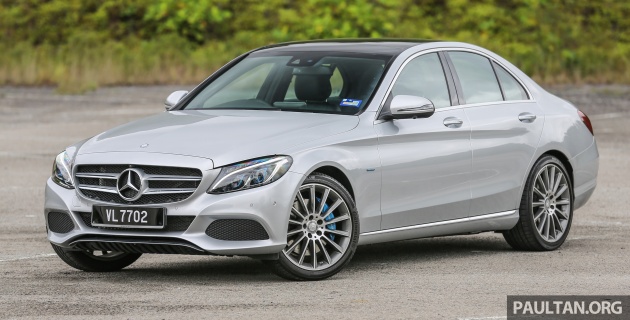
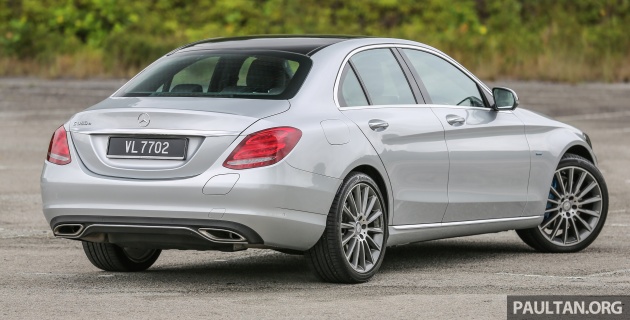


















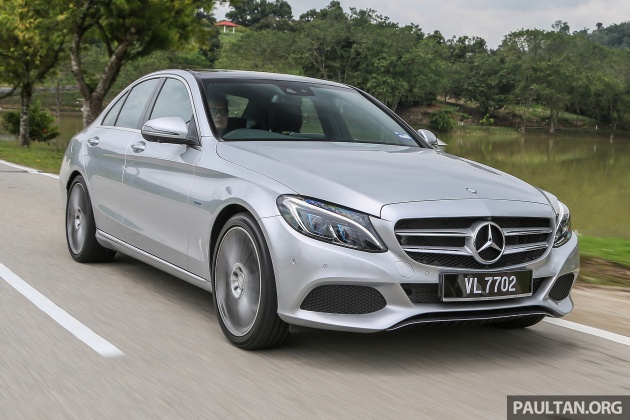
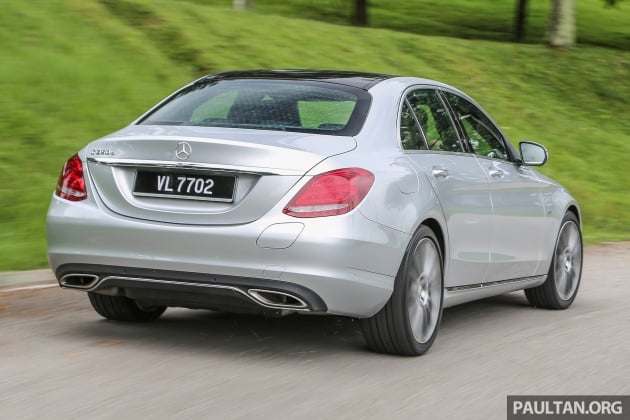
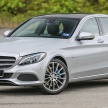
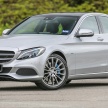
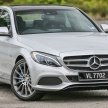
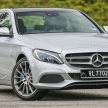
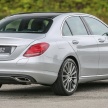
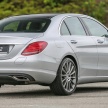
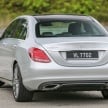
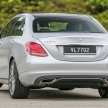
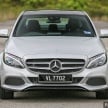
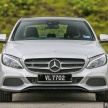
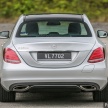
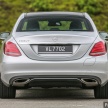
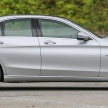
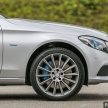
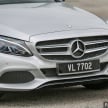

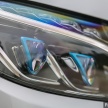
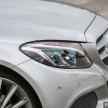
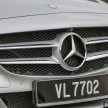
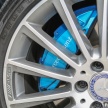
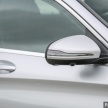
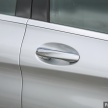
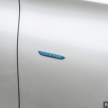
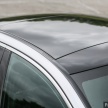

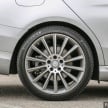
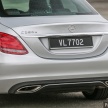
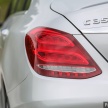
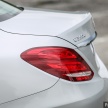
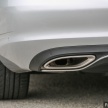
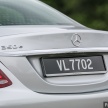
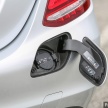
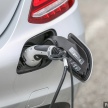
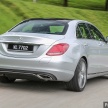

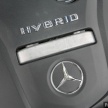
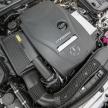
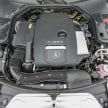
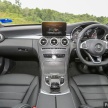
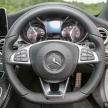
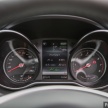
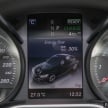
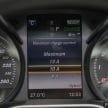
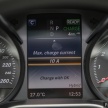
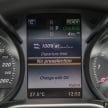
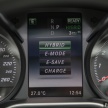
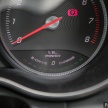
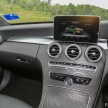
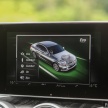
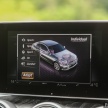
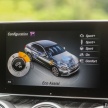
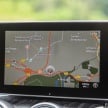
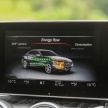
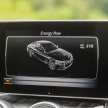
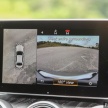
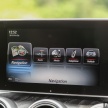
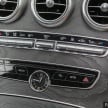

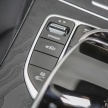
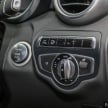
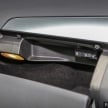
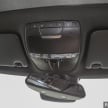
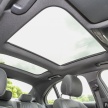
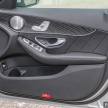

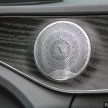
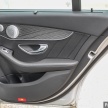
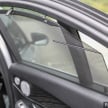
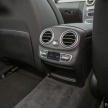
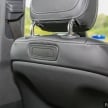
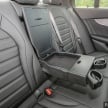
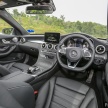
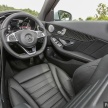
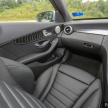
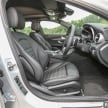
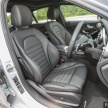
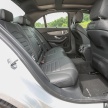
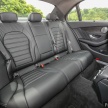
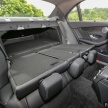
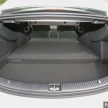

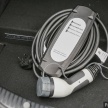
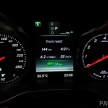
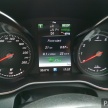
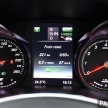


















































Cannot understand how it is RM300k. In UK, it is 29,000 pounds (RM180k). This price is AFTER the UK dealership makes profit.
Since this car benefits from tax exemptions, how can the price jump to RM300k?
MBM will probably get this car here for 23,000 pounds (RM110k) in raw CKD form in Port Klang.
Eh? Come pipu says cuz our exchange is better value wor. Just like some pipu says more exp in tomyam & indomee cuz of exchange rate.
I roughly configure and choose C350e from UK MB website it cost around 45,385 pound for our Malaysia configuration, the 29,000 pound you mention is basic C200 basic model. One reason our Hybrid pricing is closer than other counter other than the no tax is our poor currency exchange, I have to agree we don’t need all the kit for the hybrid model and unfortunately this is how they configure not to cannibalize it C200 and C250 rivals.
A C350 AMG Line with metallic paint and panoramic roof in the UK is £42,640 (RM239k) not £29,000
C350 and C350e are two different cars. The C350e, just like the Nissan Leaf, you get Hybrid/EV incentive from the Government.
Go and live in the UK first before fetching things from the internet blindly
i think he meant C350e ,bcoz there’s no such thing as C350 non “e”
Here we go again with Kunta, where he will quote the base price in these countries where they often don’t even give you alloy wheels.
£29,000 is for the base line (£28,160 actually) C 200 6 speed manual model.
The hybrid STARTS at £38,765 without any options added.
https://www.mercedes-benz.co.uk/passengercars/mercedes-benz-cars/models/c-class/c-class-saloon/overview.html#?rccVehicleModelId=2050422&rccNationalSalesType=GB1
Go and see UK hybrid and EV incentives given by the Government. Then talk. In the UK, if you buy the C350e you get cash back EV incentive.
You might want to edit this : “EV mode run offering a 0.1 km per 100 litre reading.”
Oh dear, haha, that was one cross-eyed mistake! Which would make it the worst FC, ever! Corrected, thank you for the spot.
A compelling mix of premium style, power and fuel efficiency. The best in its class.
I got a chance to test drive it a while back. Although I like everything about the car (except the price), however there is something that I find a bit strange, the braking distance/confidence.
I find it not as good as the normal C250W204 or e250W212. It took slightly more time for the brake to come into its grip. It is it me or because of the extra 270kg put on the c350e?
The energy-recuperating brake pedal leads to unprogressive braking feel as the effort is shuffled between regeneration and friction. Very similar to the 330e’s.
Anthony’s writing has improved a lot! Kudos.
We always ask for me after you improved, could you do a comparison F30 330e vs W205 350e vs Toyota Camry Hybrid? May not be a fair comparisons but interested to see how German vs Japanese hybrid.
WOW, An Airmatic self-levelling air suspension, Thermotronic 3-zone automatic climate control, 13-speaker Burmester surround sound system for a C-class 350e.
The premium features use to be in the upper-class rage of vehicle that cost in excess of RM 500k. This suddenly looks cheap especially when our ringgit has shrunk to 4.32 to the US dollar.
This must be the cheapest entry to luxury/clean motoring & U don’t have 2 feel guilty for the environment too.
Kudos to Gomen’s relief under the hybrid tax incentive scheme.
cukurlah for the cheap car price
hepi when u replace those airmatic suspensions
my mom bought this car, and ive tested it. The transition from electric to hybrid/engine is very2 noticeable that it makes the driving sucks. Especially when going electric to hybrid/engine, can feel some sort of like engine braking
Camry hybrid seamless transition. Wooots!
I have experienced the same thing in E300 diesel hybrid….
My 2.2 diesel Japanese does the same mileage, but don’t have to keep watching your driving , just pedal it
It’s still too heavy.
I wonder how this car compares to the Camry Hybrid as far as the hybrid operation is concerned. It is a known fact that the Toyota Hybrid Synergy Drive system is one of the best hybrid system available today. Can the Mercedes (and BMW as well) system be better? Will it charge the battery as efficiently? Does the transition from engine to electric operation feel more seamless?
Accelerate harder in Camry and the petrol engine joins in, until you find yourself in bumper-to-bumper traffic and then silence again as you go back to running on electricity. The hybrid system works seamlessly.
This hybrid setup has proved to be reliable and durable— look no further than the many Camry hybrid cabs in New York.
Toyota hybrid synergy drive is the benchmark for seamless transition because that special gearbox between wheels , engine and motor.
I thought bashers say Camry is dinosaur car?
8.2 litres per 100km isn’t that great, when you consider that it was mostly highway driving. Am sure a diesel C Class can better that, easily. Maybe cos it wasn’t fully charged before driving off from Ipoh. And the fact that the electric/petrol transitions were not as smooth as the 330e just makes it look like the 330e is over performing its price point. The advantage the C350e has over the BMW is its stylish interior, better kit, performance and smooth ride. The BMW’s advantage appears to be handling, price, more refined hybrid experience, and better fuel efficiency. Quite equal in terms of advantages they have.
Just assumed the car clocked 8.2l / 100km.
Isn’t it the petrol consumption just like normal car?
Plz correct me.
Thanks
Very poorly written article. Reading it is confusing. And made me feel annoyed. Better quality writer pls, paultan.org.
Which part did you find confusing? You may ask in the comment section and we can clarify it better.
After reading this, I wonder if my decision to buy the C350e is the right one. Should I cancel my booking?
I already have a 3 series hence I dont go for the 330e.
Its a gimmick by having only a 6.5kWh battery. Not even near Jap hybrid territory means don’t waste your money on this. Unless, it’s 80-100km electric range only make sense. Aren’t you all curious BMW & Benz PHEV has only 20-30km range? Go look at Ioniq plugin with a 8.9kWh battery 50km range and Prius plugin 9kWh.
because of weight. prius and ioniq are around 200kg lighter than 330e or c350e
Any pictures of the AMG line c350e, interior and exterior? Will it have the same bodykit as the c300?
This entire article is very difficult to read. Sentences seem too lengthy. Very poorly written. Feels like reading something from a google translate. Hope you can make it easier to read.